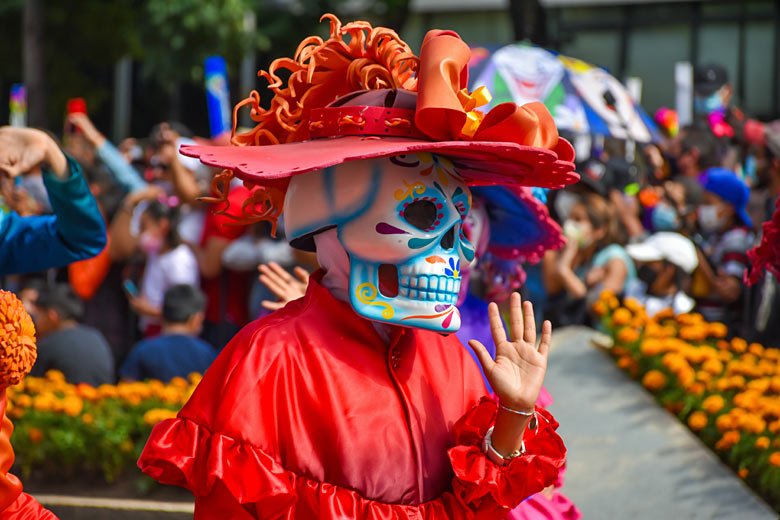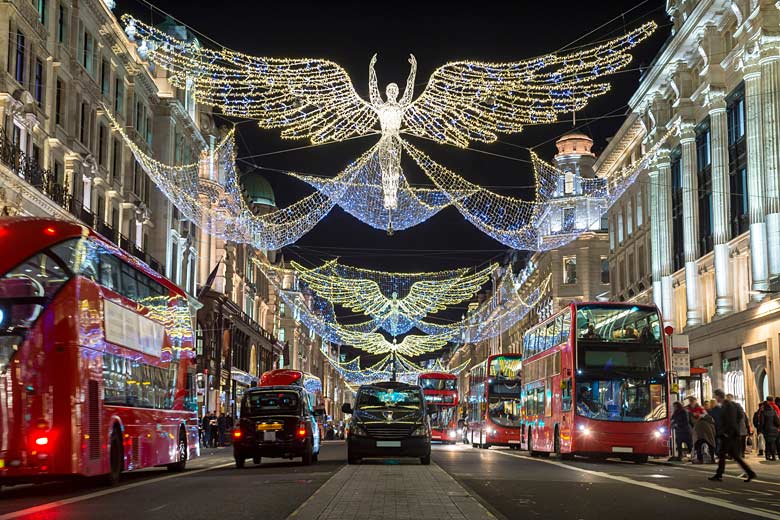Get to know Morocco's majestic Imperial cities
Every bit as majestic as their collective regal umbrella name suggests, the ancient cities of Fes, Marrakech, Meknes and Rabat offer glimpses of Morocco's evolution through the centuries. Here, we take a look at each destination and see why any visit to warm and friendly Morocco* is time well spent.
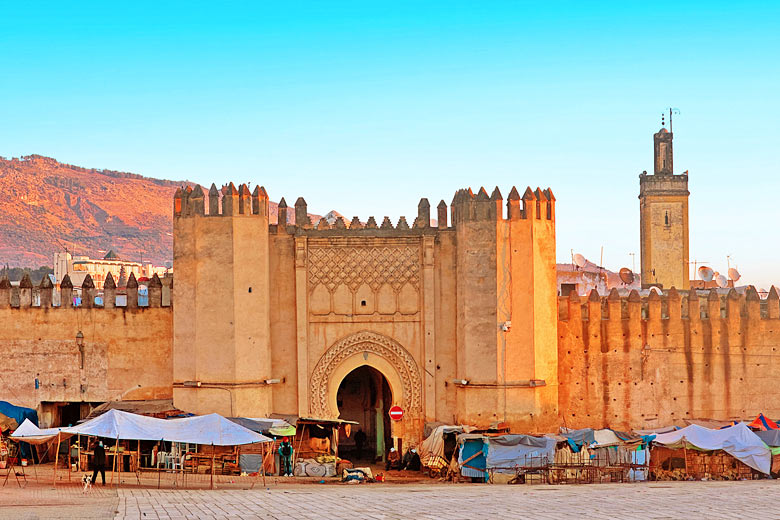
Getting to Morocco: whether you're hoping to visit all or just one of the Imperial cities, Love Holidays offers great value breaks* to Morocco.
Fes
Ah, Fes. Beautiful Fes*. Morocco's second-largest city has claimed the title of capital not once, not even twice, but seven times since it was founded around the turn of the 9th century.
It's home to the world's oldest university not to mention some of the most spiritually important buildings in the country and hundreds of minarets that sing out five times each day.
Tiled fountains offer kaleidoscopes of colour and geometric patterns, while the all-important babs (gates) give you an idea of where you're entering and exiting, in theory anyway.
The Medina, Fes el Bali, is a living, breathing museum that still functions as intended. Now UNESCO-listed, it dates from around the 14th century, packing in mosques and minarets, madrasas and private residences where locals live surrounded by more than 700 years of history.
Top tip: the Medina can get very busy with locals going about their daily business and tourists stopping at all the wrong moments; go early to explore without the crowds.
Getting lost in the Medina is all part of the experience; even diligently following the waymarked routes through the maze of narrow streets, dodging heavily laden donkeys, fast-moving carts and sleeping alley cats, you'll be left wondering how on earth you ended up over here when you thought you were going over there.
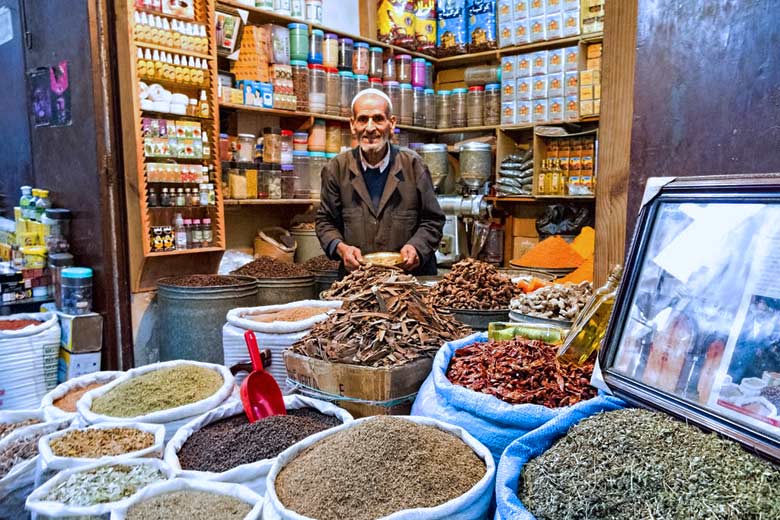
Thanks to the mile-long stretch of souks, you won't go home empty-handed. Everything from fresh fruit and fish to prints, textiles, jewellery, hand-painted ceramics, stunning filigree brass lanterns and so much more is touted by cheery vendors who will also happily point weary map readers in the direction of the nearest bab.
Be sure to stick your head inside the Madrasa Bou Inania. Go for its intricate courtyard and because it's one of the few holy sites that allow non-Muslims to enter.
Art lovers should head for the Nejjarine Museum of Wood Arts and Crafts, while the pungent Chouwara Tanneries, which still prepare, treat and dye leather in the traditional way, will knock you out with the stench.
For adventures outside of the Medina, take a wander through the Mellah, or the old Jewish quarter, to see another side to the city with an entirely different vibe.
The palm tree-lined Jardin Jnan Sbil makes for a landscaped breather, while the Merenid Tombs and Borj Nord fort, which overlooks the old town, are worth the hike once you've finished with the delights of the Medina below.
Weather in Fes
| Jan | Feb | Mar | Apr | May | Jun | Jul | Aug | Sep | Oct | Nov | Dec | |
|---|---|---|---|---|---|---|---|---|---|---|---|---|
| Maximum daytime temperature °C |  16 16 |
 17 17 |
 19 19 |
 20 20 |
 24 24 |
 28 28 |
 33 33 |
 33 33 |
 30 30 |
 25 25 |
 20 20 |
 16 16 |
| Hours of sunshine (daily) | ||||||||||||
| Days with some rainfall |  9 9 |
 10 10 |
 9 9 |
 10 10 |
 7 7 |
 3 3 |
 1 1 |
 1 1 |
 3 3 |
 7 7 |
 9 9 |
 9 9 |
Find out more about the weather in Fes.
Marrakech
Marrakech is so jam-packed with things to see and things to do, that you could easily spend a week staying in the city. The go-to destination in Morocco for most visitors, Marrakech* has one strong personality. Every visit is an intoxicating one and it's easy to see why people often return again and again.
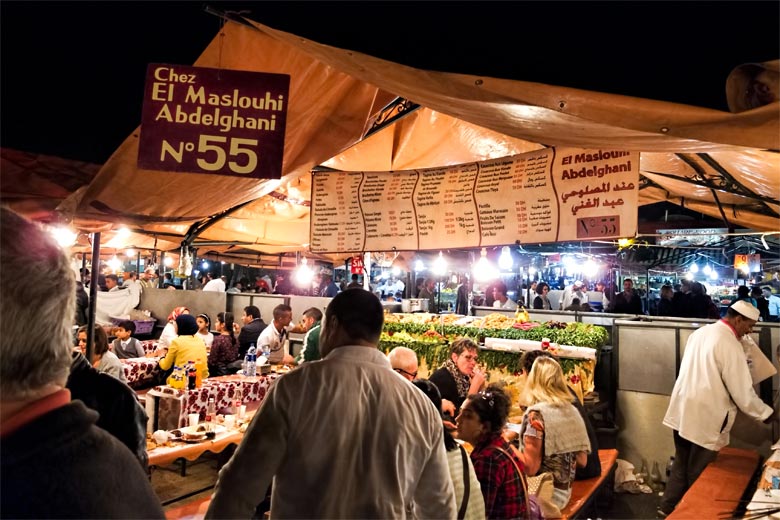
Think Marrakech, and you'll likely picture the Jemaa el Fna - surely the single most photographed area in the city. The square has of two distinct identities: by day, it throbs with tourists gazing up at the nearby minaret of the Koutoubia Mosque, browsing stalls and (hopefully) avoiding the snake charmers.
As day becomes dusk, the Jemaa el Fna is transformed into an open-air market. Steaming food stalls hum into life, dishing up all sorts of tasty grilled meat and seafood. When deciding where to eat, always do as the locals do.
If it's embellished slippers, beaded bags, terracotta pots or statement jewellery you're after, Marrakech's collection of souks is for you. Often seen as one souk, Marrakech actually has a number of different souks which weave into each other.
You've got the noisy metalworking souk, the fragrant spice souk and the dazzling carpet souk, among others. Forget following the map, just throw yourself in and enjoy every twist, turn and nose-tingling scent.
Go early to the Ben Youssef Madrasa, which is just as interesting as it is ornate. The nearby Marrakech Museum offers an insight into the city's past, while the polished courtyard and gardens of the Bahia Palace along with the dusty red ruins of the 16th-century El Badi Palace give two contrasting views for the culturally curious.
Top tip: time on your side? Look into day trip options to the Atlas Mountains and/or the Sahara Desert to squeeze that bit more from your time in Marrakech.
Outwith the medina, fashion lovers will want to make for the Yves Saint Laurent Museum, which looks at the designer's love affair with the city, and the inspirations that he took from his extensive time in Morocco. A visit to the nearby royal blue gallery at Jardin Majorelle with its palms, cacti and flowing fountains is another must.
Meanwhile, Agdal Gardens, with its olive groves and exotic orchard full of lemon, fig and pomegranate trees, is another fresh-air favourite. Don't miss the ingenious irrigation pools that disperse water descended from the Atlas Mountains.
Weather in Marrakech
Find out more about the weather in Marrakech.
Meknes
Meknes is often attached to Fes as some sort of side note. However, Meknes has a curious tale to tell, even if it was only the capital once.
Granted, it doesn't have quite the same long list of attractions as Fes but what you can see makes the trip worthwhile. Climbing uphill through the bougainvillaea-draped modern neighbourhoods of Meknes, you suddenly pop through the looming ramparts and into what seems like another world.
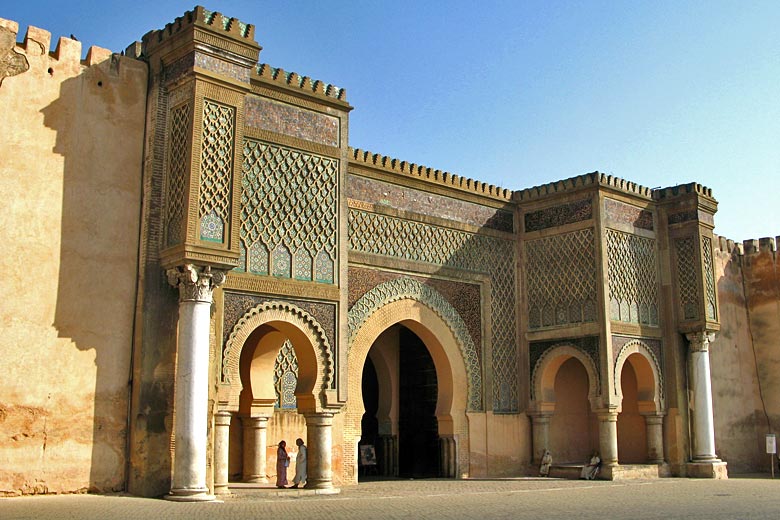
Meknes, too, boasts a UNESCO-certified Medina, enveloped in part by ancient walls. One of the city's biggest draws, though, is the Bab el Mansour.
This impressive gate was finished in 1732 and is lauded not only as a giant example of Moroccan bab architecture but for its striking geometric zellij tiles and Qur'anic inscriptions.
It's the gateway to the old Medina of Meknes and the typical starting point for any visit. Use the Place el Hedim in front of the Bab el Mansour to orientate yourself, and go from there.
Here, you're close to the souk, as well as the Mellah (Jewish quarter) with its outdoor market selling all sorts of useful everyday items you never knew you needed. Don't miss the Dar Jamai Museum by the entrance to the souk, which showcases traditional clothing and jewellery in a beautiful old palace (the interior alone is worth seeing).
Top tip: stop for a refreshment in Place el Hedim where you can sit back and watch the busy world go by to the soundtrack of competing boomboxes from rival stalls.
Head into the souk, and meander past stalls selling everything from trainers to gold, and you'll find one of the city's most revered stops at the Mausoleum of Moulay Ismail, the ruler who made Meknes his capital from 1672 to 1727. Non-muslims are permitted to enter but not approach the tomb.
Just southeast of the Medina are the twin attractions of Heri es-Souani (or Royal Stables and Granaries) and Agdal Basin. The appeal of Heri es-Souani lies in its scale; it was designed to store grain plus as many as 12,000 horses at a time. Although large sections have now collapsed, it's easy to get a sense of just how massive this would have been.
Nearby Agdal Basin attracts locals and tourists after some space and fresh air by the large reservoir-cum-lake.
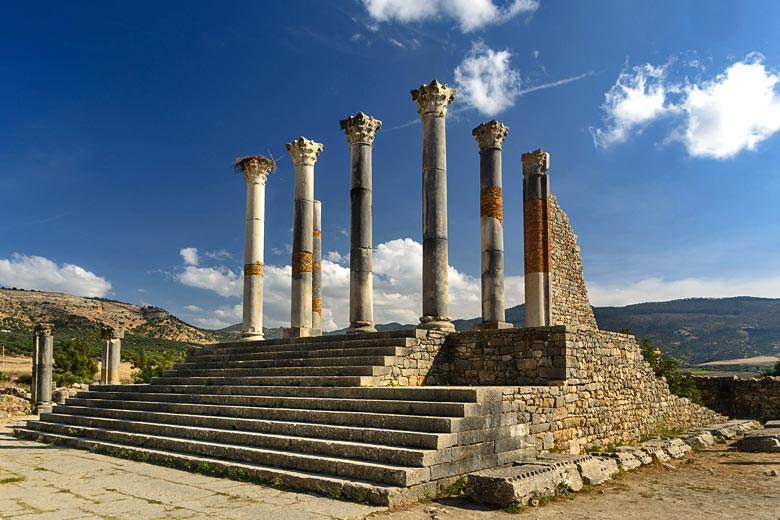
History lovers will want to visit the UNESCO-stamped Roman ruins of Volubilis, around 40 minutes from the centre of Meknes. Expect to see find remnants of the empire's most westerly outpost, such as paved streets, temples and impeccably well-preserved mosaics that combine to create the sense of a vibrant city that doesn't feel more than 2,000 years old.
Weather in Meknes
| Jan | Feb | Mar | Apr | May | Jun | Jul | Aug | Sep | Oct | Nov | Dec | |
|---|---|---|---|---|---|---|---|---|---|---|---|---|
| Maximum daytime temperature °C |  16 16 |
 17 17 |
 19 19 |
 20 20 |
 24 24 |
 28 28 |
 32 32 |
 32 32 |
 30 30 |
 25 25 |
 20 20 |
 16 16 |
| Hours of sunshine (daily) | ||||||||||||
| Days with some rainfall |  9 9 |
 10 10 |
 9 9 |
 10 10 |
 7 7 |
 3 3 |
 1 1 |
 1 1 |
 3 3 |
 7 7 |
 10 10 |
 10 10 |
Find out more about the weather in Meknes.
Rabat
The coastal capital of modern-day Morocco is often unfairly overlooked in favour of its imperial siblings.
Located on the edge of the Atlantic, Rabat* is, in many ways, quite different; compact in size, cosmopolitan in vibe, yet channelling the architecture and history which so many come to Morocco to experience. It offers an interesting contrast for anyone exploring the four historic power bases.
One of the city's most dominant features, Rabat's Chellah is a fortified medieval necropolis on the edge of the estuary. It's a popular attraction as people come to see history come alive through the site. Among the ruins, seek out the impressive ramparts, remains of Roman walls, 13th-century minaret (often topped with a resident stork's nest) and decorated entrance.
By the mouth of the river, where it meets the great ocean, is the scenic 12th-century Kasbah of the Udayas. Once a fort, it's now home to local residents who live in the incredibly beautiful blue and white painted streets of this ancient maze.
The waterfront is one of Rabat's biggest draws. Pick a bar and enjoy the sunset or stroll to see the waves roll in from the Atlantic by the lighthouse.
There are a number of public beaches that are perfect for lazy days of doing not a lot. The Bouregreg Marina is full of contrasts with everything from some of the city's ancient monuments to modern-day marvels.
Rabat's Medina is smaller and less daunting than the others but still well stocked with familiar souvenirs and crafts. The Medina provides another good opportunity to get a little lost (manageably lost, shall we say) and see pretty painted wooden doorways, winding alleyways and inside delightful riads that dot the old town.
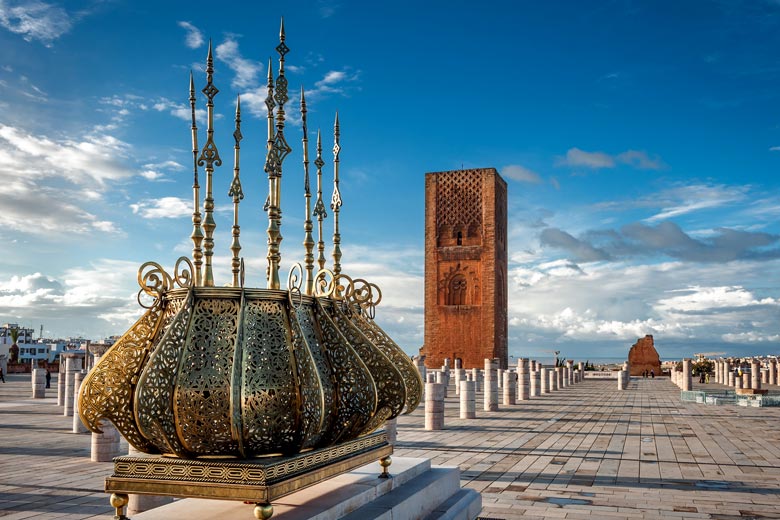
A Rabat icon, the Hassan Tower is a city landmark and UNESCO site. Construction began on this fine minaret in 1195, however, after its founder died, the tower and its associated mosque were put on hold and never completed.
You can still see the remains of some 200 columns and red sandstone walls that would have housed the mosque. Close by, you'll spy the Mausoleum of Mohammed V, the relatively modern (1962) resting place of its namesake king and his two sons.
In a nod to its more avant-garde side, the Museum Mohamed VI of Modern and Contemporary Art is a Rabat staple, while the petite National Archeology Museum explains a bit about the country's past and displays a collection of artefacts from across the millennia.
Weather in Rabat
Find out more about the weather in Rabat.
Ready to explore Morocco? Check out the latest online offers from Love Holidays, which offers escapes to three of the Imperial cities among other destinations in Morocco.
More about Morocco
- Best time to visit
- Weather by month
- 5-day weather forecast
- Destinations
- Travel guide
- Deals & discounts
Morocco by month
Jan Feb Mar Apr May Jun Jul Aug Sep Oct Nov Dec
Explore holiday destinations
- Beach holidays
- City breaks
- Family holidays
- Half term holidays
- Spring holidays
- Summer holidays
- Autumn holidays
- Winter sun holidays
- Honeymoons
- Coolcations
- Compare places
- Ski resorts
Save with latest deals & discounts
- Holiday offers
- Top travel brands
- Airlines & flights
- Discount hotels
- TUI
- Jet2holidays
- Neilson
- Marella Cruises
- Pierre & Vacances
- Caledonian Travel
- Club Med
- Black Friday sales
Airport parking
- Manchester Airport
- Stansted Airport
- Bristol Airport
- Luton Airport
- Birmingham Airport
- Edinburgh Airport
- Gatwick Airport
- Glasgow Airport
- Newcastle Airport
Airport lounges
- Manchester Airport
- Birmingham Airport
- Bristol Airport
- Edinburgh Airport
- Glasgow Airport
- Heathrow Airport
- Newcastle Airport
- Stansted Airport
- Gatwick Airport
Be inspired
Get your weekly fix of holiday inspiration from some of the world's best travel writers plus save on your next trip with the latest exclusive offers
We promise not to share your details























